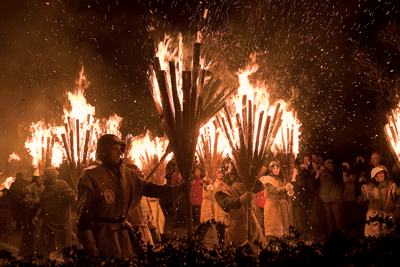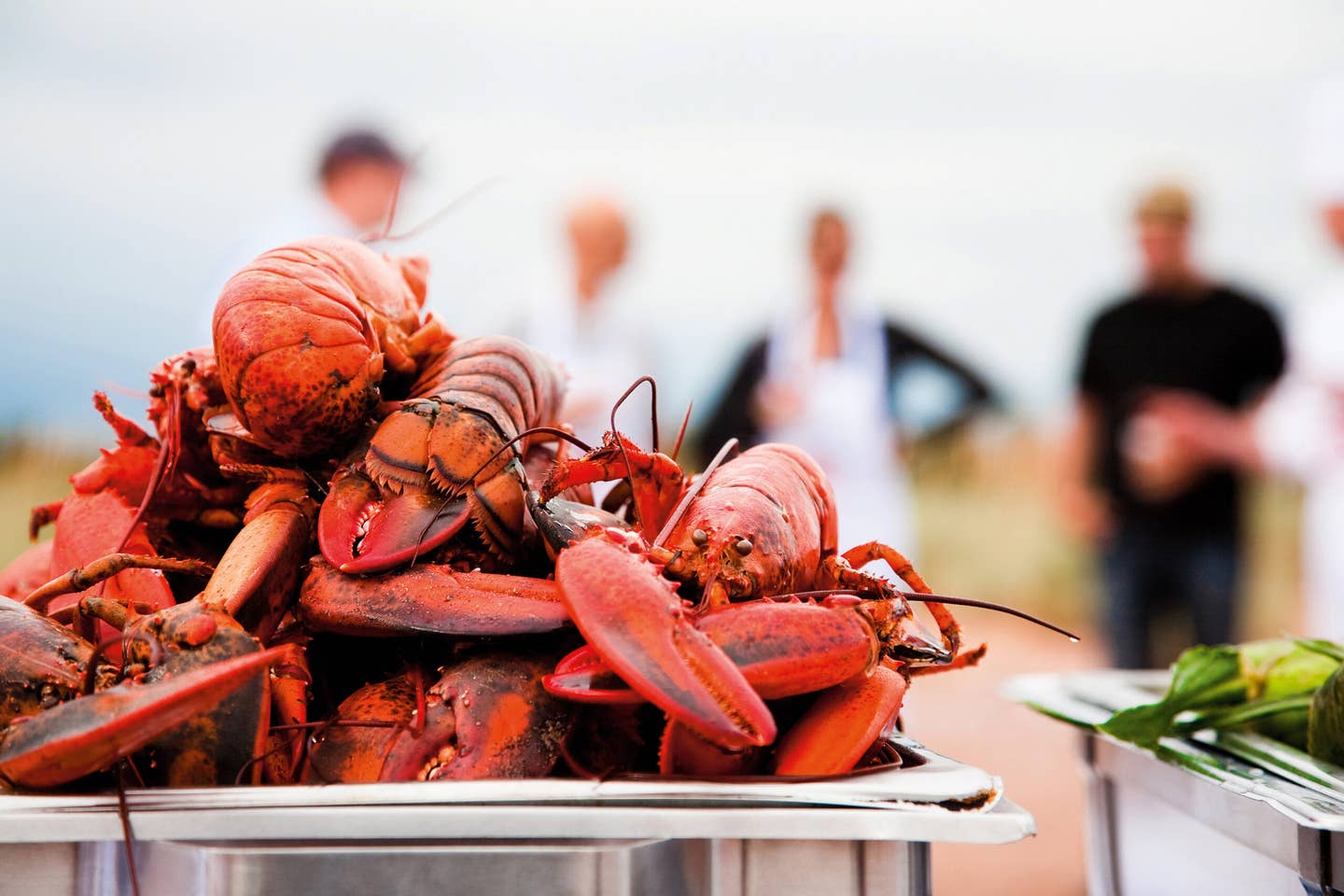
I 'd been walking the damp, cobblestoned streets of Basel, Switzerland, for hours, and it' wasn't even dawn yet. Every few seconds I had to duck into a darkened doorway to allow drummers and piccolo players in giant harlequin masks to march by. The Lenten-season carnival known here as Fasnacht officially kicked off at four in the morning, but I'd been going steadily since the night before, when I watched the Chienbase, a pre-Fasnacht procession of men and boys in firemen's helmets carrying huge cords of flaming pinewood perilously close to timber-framed buildings. My hair still smelled of smoke, and my coat had holes in it where embers from the burning pyres had landed. My feet were freezing. Now seemed as good a time as any for breakfast.
On a side street above a square called Barfusserplatz, I could hear men singing—a little off-key but with no shortage of feeling—and detect the tantalizing aroma of sauteed onions. The sound and scent were coming from an open doorway above which hung a handmade sign that read kaller. I walked down a corridor, descended a twisting staircase, and emerged into a barrel-ceilinged chamber packed wall to wall with revelers, mostly men, mostly in yellow fat suits adorned with red pom-poms. Oversize masks were stacked in a corner. The venue recalled a bomb shelter, albeit a festive one. When I walked in, one costumed guy slid over on his bench to make room for me.
The singing had stopped, and everyone was now being served slices of Zwiebelwahe, a delicious, bacon-studded onion tart you can get almost everywhere in Basel during the carnival. I ordered a slice, and it restored me right away. When I'd finished, the man to my left offered me a snort of snuff. "It'll keep you warm out there!" he announced, though he made the point that he never got cold. "It's genetic," he said. "My mother marched and played piccolo at Fasnacht when I was in the womb."
I knew that Basel, a city of 200,000 people in northwestern Switzerland, was home to hundreds of Kaller like this one. These private cellar bars, open to the public during Fasnacht, serve as the year-round headquarters of the venerable Fasnacht parade clubs, or cliques, of which no fewer than 10,000 residents of Basel and its environs are members. Eating my onion tart, I realized that this was how the people of Basel recharged during their three-day carnival, which is more extravagant and finely orchestrated than other Lenten fests in Europe that go by the same name or similar ones, such as Fasching in Munich. Day and night, the clique members march in formation in heavy costumes and, when they require rest and respite from the elements, descend with their mates into a Kaller for food and drink perfectly designed to provide fuel for marching in the chill of late winter.
Later that afternoon, after a nap that was terminated by the sound of fifes and drums, I tromped around near the banks of the Rhine under a bruise-colored sky, admiring the exquisitely painted lanterns carried by the cliques, and then retreated to the gaily adorned Kaller of a parade club called Ratz Stadt. Amid confetti-flecked marchers, I sat down to a bowl of silky, peppery Mehlsuppe, a simple concoction of beef stock, browned flour, and butter that warmed me to the marrow. It came with a fresh-from-the-oven slice of Kasewahe, a fluffy cheese tart made with tangy Gruyere, and a chilled glass of pale red schwarzriesling wine from the Baden region that was light on the palate and just right for a midafternoon meal.
Refreshed, I explored Basel's postcard-pretty old quarter and beheld a city transformed. Every restaurant, cafe, and bakery was festooned with ribbons and bedecked with masks, drums, lanterns, and other Fasnacht paraphernalia. The pastry shops had really gone all out. The window of Confiserie Schiesser, a bakery facing Basel's central Marktplatz, was a gallery of carnival sweets so lavish as to put me off fasting for the rest of my life: doughnut-like Berliner; raisin-studded pastries called Osterfladli; colorful Massmogge, or hazelnut candies; plus tortes, truffle cakes, candied fruits, and dozens of hand-painted marzipan confections in the shape of Waggis, the Swiss folkloric characters associated with Fasnacht. I stepped inside and purchased a Fasnachtskiechli, a sugar-dusted, melt-in-your-mouth Lenten pastry—the refined European cousin of the funnel cake.
For the next couple of days and nights, I went with the flow, checking out the parade groups, attending the grand Cortege, during which the 500 or so formally recognized cliques march before members of the Fasnacht organizing committee, and popping into the cellar bars for Zwiebelwahe and Mehlsuppe. Then, just as I was getting used to being surrounded at all times by people in masks and jester's outfits, the whole affair ended—precisely 72 hours after it began. By nine o'clock the next morning, city workers had swept away every last piece of confetti and the trams were filled with briefcase-toting men and women clutching their Basler Zeitung, the local newspaper. The doors to all the Kaller would be closed to nonmembers until preparations began for the next year's Fasnacht. I'd have killed for a slice of onion tart, but instead I decided to get some sleep, the sound of piccolos still singing in my ears.
Keep Reading
Continue to Next Story










